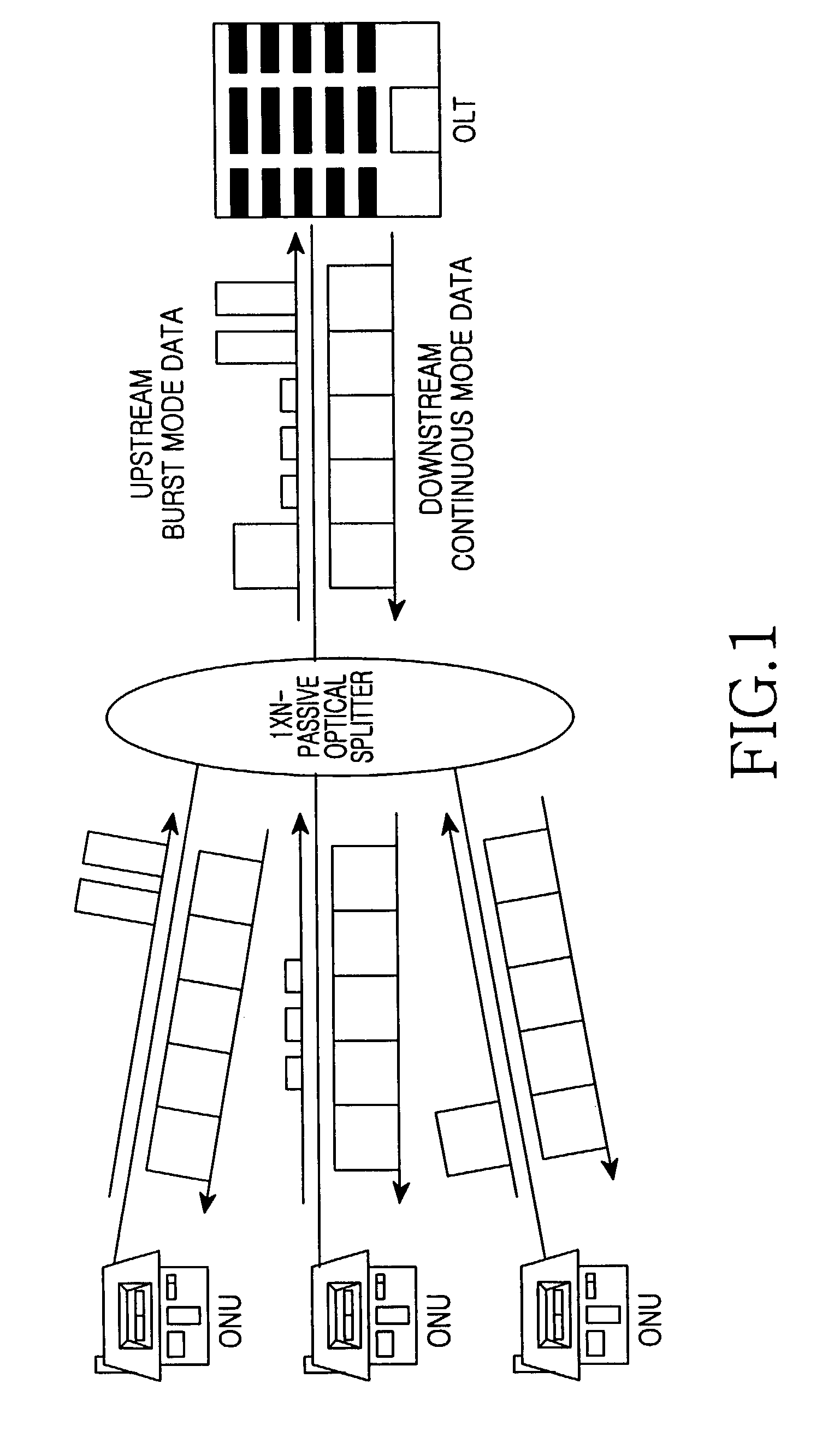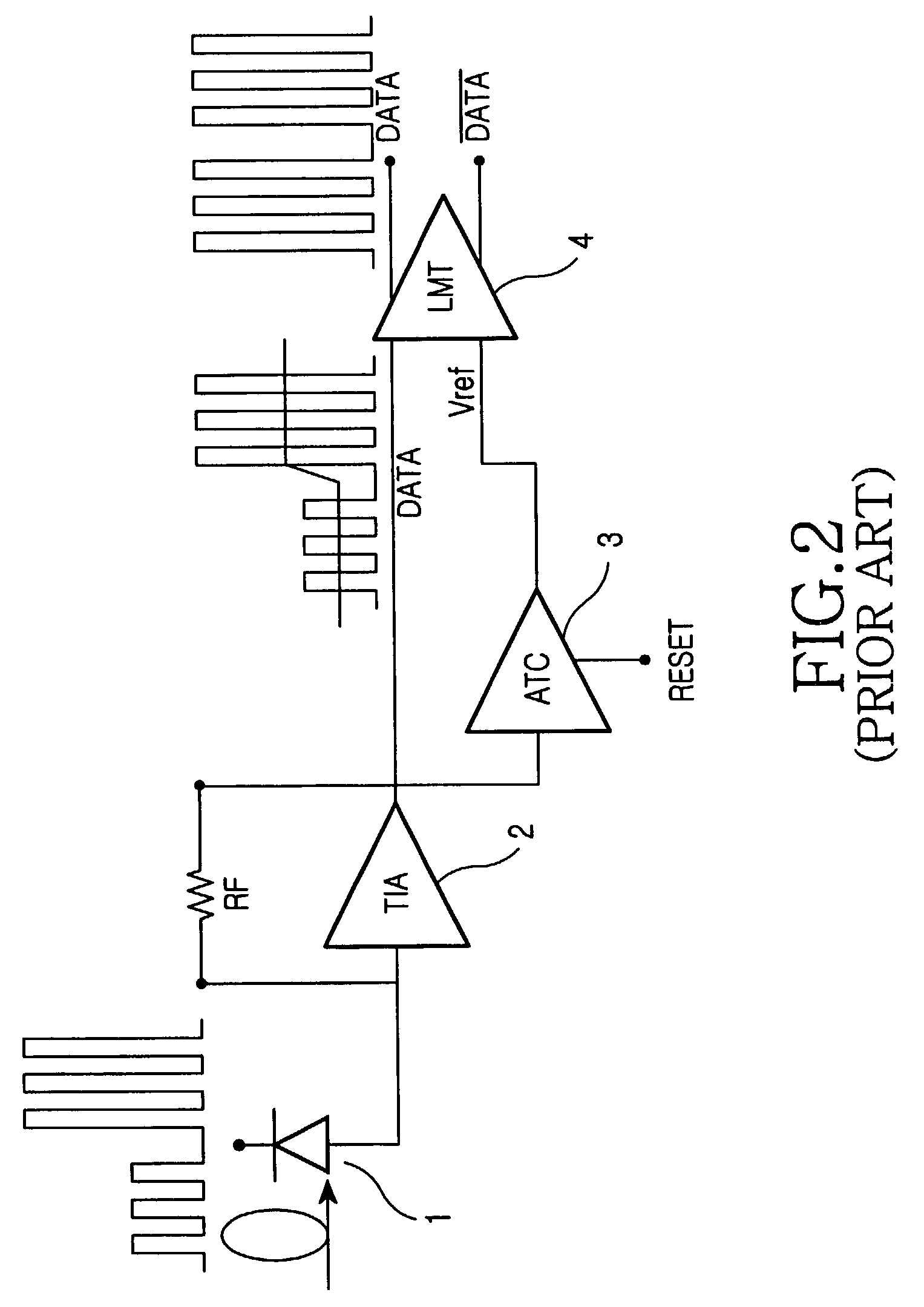Burst-mode optical receiver of differential output structure
a technology of optical receiver and differential output structure, applied in the direction of dc level restoring means or bias distort correction, baseband system details, instruments, etc., can solve the problems of pulse width distortion, packets received at the receiving end are not uniform in size, and costly to replace them with fiber-based lines, etc., to improve reception sensitivity, reduce pulse width distortion, simple, reliable and inexpensive
- Summary
- Abstract
- Description
- Claims
- Application Information
AI Technical Summary
Benefits of technology
Problems solved by technology
Method used
Image
Examples
Embodiment Construction
[0030]FIG. 4 is a circuit diagram of a burst-mode differential preamplifier of a differential-output structure according to the teachings of the present invention. As shown, the burst-mode differential preamplifier includes an optical detector 108 for converting an in-put-burst optical signal into a current signal according to the signal intensity of the input-burst optical signal. The output of the optical detector 108 is connected to a trans-impedance amplifier (TIA) 110. The TIA 110 amplifies the current received from the optical detector 108 and supplies the amplified output signal VE2 to a bottom-level detector 120 and a top-level detector 130.
[0031]The bottom-level detector 120 detects a bottom level of the signal output from the TIA 110, and the top-level detector 130 detects a top level of the signal output from the TIA 110. The bottom voltage level detected from the bottom-level detector 120 is supplied to an automatic gain controller (AGC) 140 and, in response, the AGC 140...
PUM
 Login to View More
Login to View More Abstract
Description
Claims
Application Information
 Login to View More
Login to View More - R&D
- Intellectual Property
- Life Sciences
- Materials
- Tech Scout
- Unparalleled Data Quality
- Higher Quality Content
- 60% Fewer Hallucinations
Browse by: Latest US Patents, China's latest patents, Technical Efficacy Thesaurus, Application Domain, Technology Topic, Popular Technical Reports.
© 2025 PatSnap. All rights reserved.Legal|Privacy policy|Modern Slavery Act Transparency Statement|Sitemap|About US| Contact US: help@patsnap.com



